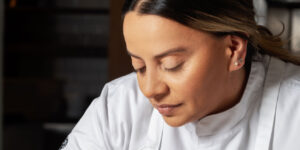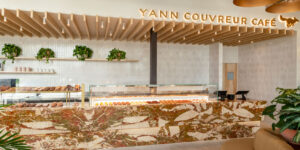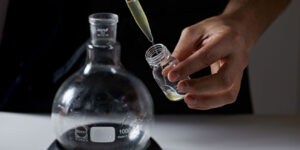Categories Pastry Chef Articles
Things to consider when making artisan jellies
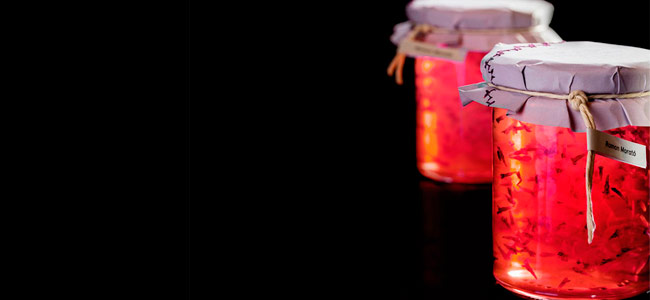
In the section “Tarts, individuals, and doughs” from the book Four in One, Ramon Morató offers some considerations for making the ideal jelly, in which three elements play a fundamental role: pectin, pH, and sugar concentration. And he so through a concrete example, a jelly made from natural apple that serves as a base to incorporate infusions of herbs, plants, etc.
This is another example that shows the close relationship between the display of creativity that runs throughout the book written by Raúl Bernal, Miquel Guarro, Josep Maria Ribé, and Ramon Morató himself, and the connection with technical foundations based on knowledge and experience.
Photos: Ivan Raga
Index Four Tecniques from Four in One
- Keys for making macarons
- Things to consider when making artisan jellies
- How to make artisan dragées coated with chocolate
- Mastering the making of chocolate spreads
The jellies
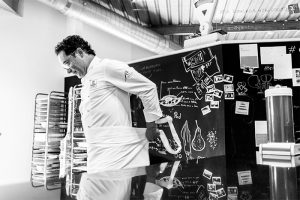 The jellies or gelatin desserts, just like the jams and preserves, are dissolutions of fruits and sugars which concentrate due to the evaporation of the water contained in the fruit until a thick gel is obtained. This effect happens thanks to the action of what we call ‘the magic triangle’ or the interaction of pectin, pH and sugar concentration.
The jellies or gelatin desserts, just like the jams and preserves, are dissolutions of fruits and sugars which concentrate due to the evaporation of the water contained in the fruit until a thick gel is obtained. This effect happens thanks to the action of what we call ‘the magic triangle’ or the interaction of pectin, pH and sugar concentration.
- The presence of pectin in the fruit in a natural way or by addition will determine the resulting texture.
- Acidity with a low pH (3 to 4) is essential so as to activate the pectins and allow the desired gel to form.
- Finally, without a cooking process the necessary concentration for the pectins to act would be impossible. In fact, although the pectin is present in the dissolution and the pH is the correct one, it is necessary to reach a minimum level of Brix degrees or sugar concentration, which is normally around 60º Brix.
A jelly from natural apple
On this occasion, we have made a jelly from natural apple. Once made, this jelly can be a useful base to incorporate herb infusions, plants, etc. Once added the infusion concentrate, it is necessary to boil again so as to adjust the Brix degrees and finish the product.
In order to obtain good results, it is important to work with green apples at their best ripening stage, freshly collected, beautiful, unspoiled and not too ripe. The wild green apples give better results and have a better flavor than those we can find in shopping centers, which have often been stored for months.
“The wild green apples give better results and have a better flavor”
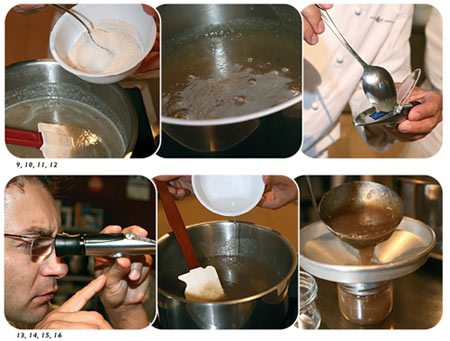
In the case of the flower jellies, as for the jams, using apple jelly as a base, it is advisable to opt for a quick cooking so as to obtain good results regarding flavor and color.
To enable the flowers to stay suspended, we have to obtain a proper viscosity at the end of the process, thus preventing the petals from floating.
If we follow the tips above and the recipe step by step, we will surely obtain a satisfactory result. If we want to increase the thickness of the gel, it is also possible to incorporate apple pectin during the preparation of the jelly. Common pectin works fine, but there are some apple pectins with a quick gelling factor which are more suitable for this type of products.
Seal and sterilize
Once the jellies have been made, they can be placed into jars, previously washed and dried in a 100ºC oven. If bottled right after finishing the cooking process, and while the jars are still hot, it is essential to seal the containers immediately and turn them upside down. This way, the product will be sterilized. Another option is to place the sealed jars in a steam oven or in a bain marie in a saucepan with boiling water for an additional 40 minutes (for 200 ml jars approximately).
Finally, there is also the option of using an autoclave, especially when working with jams or jellies with a lower sugar concentration.
In all the cases, it is advisable to keep the jars away from the sunlight and to store them in a dry place.
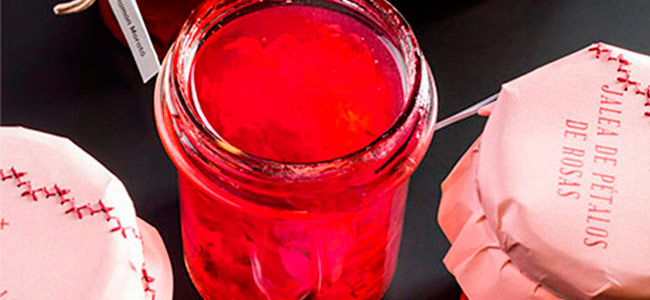
Discover the recipe of Apple jelly base, and how, from it, make a rose jelly and lavender flower jelly in Four in One.

